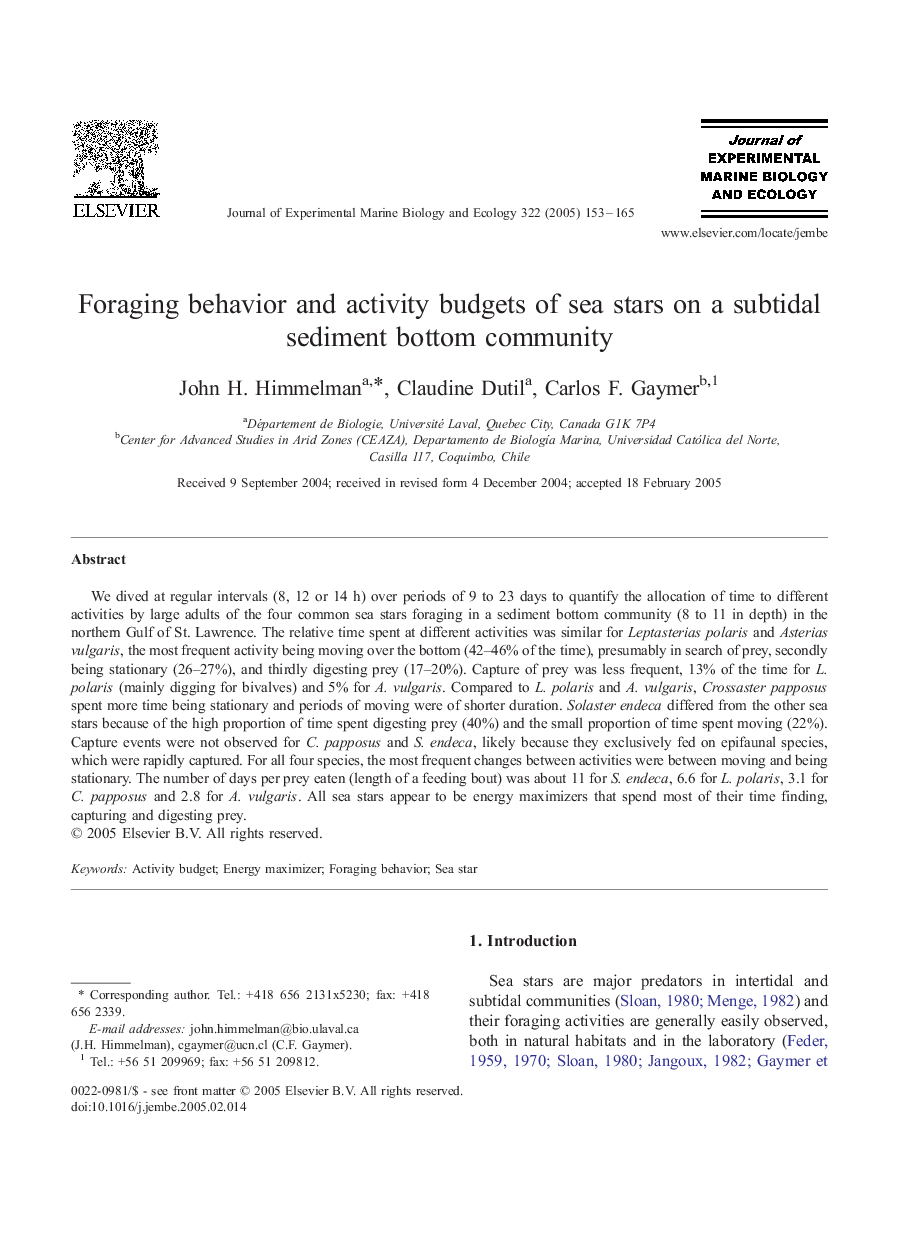| Article ID | Journal | Published Year | Pages | File Type |
|---|---|---|---|---|
| 9448647 | Journal of Experimental Marine Biology and Ecology | 2005 | 13 Pages |
Abstract
We dived at regular intervals (8, 12 or 14 h) over periods of 9 to 23 days to quantify the allocation of time to different activities by large adults of the four common sea stars foraging in a sediment bottom community (8 to 11 in depth) in the northern Gulf of St. Lawrence. The relative time spent at different activities was similar for Leptasterias polaris and Asterias vulgaris, the most frequent activity being moving over the bottom (42-46% of the time), presumably in search of prey, secondly being stationary (26-27%), and thirdly digesting prey (17-20%). Capture of prey was less frequent, 13% of the time for L. polaris (mainly digging for bivalves) and 5% for A. vulgaris. Compared to L. polaris and A. vulgaris, Crossaster papposus spent more time being stationary and periods of moving were of shorter duration. Solaster endeca differed from the other sea stars because of the high proportion of time spent digesting prey (40%) and the small proportion of time spent moving (22%). Capture events were not observed for C. papposus and S. endeca, likely because they exclusively fed on epifaunal species, which were rapidly captured. For all four species, the most frequent changes between activities were between moving and being stationary. The number of days per prey eaten (length of a feeding bout) was about 11 for S. endeca, 6.6 for L. polaris, 3.1 for C. papposus and 2.8 for A. vulgaris. All sea stars appear to be energy maximizers that spend most of their time finding, capturing and digesting prey.
Related Topics
Life Sciences
Agricultural and Biological Sciences
Aquatic Science
Authors
John H. Himmelman, Claudine Dutil, Carlos F. Gaymer,
